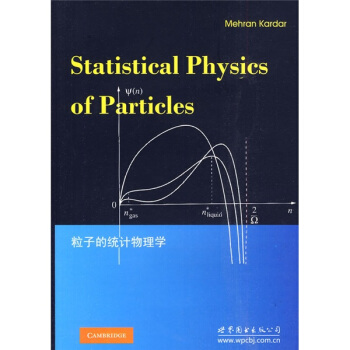![群论导论(第4版)(英文版) [An Introduction to the Theory of Groups]](https://pic.tinynews.org/10184591/0899ce80-e4c2-49b6-9e6f-4daa065c4793.jpg)

具体描述
内容简介
《群论导论(第4版)(英文版)》介绍了:Group Theory is a vast subject and, in this Introduction (as well as in theearlier editions), I have tried to select important and representative theoremsand to organize them in a coherent way. Proofs must be clear, and examplesshould illustrate theorems and also explain the presence of restrictive hypo-theses. ! also believe that some history should be given so that one canunderstand the origin of problems and the context in which the subjectdeveloped. Just as each of the earlier editions differs from the previous one in a signifi-cant way, the present (fourth) edition is genuinely different from the third.Indeed, this is already apparent in the Table of Contents. The book nowbegins with the unique factorization of permutations into disjoint cycles andthe parity of permutations; only then is the idea of group introduced. This isconsistent with the history of Group Theory, for these first results on permu-tations can be found in an 1815 paper by Cauchy, whereas groups of permu-tations were not introduced until 1831 (by Galois)But even if history目录
Preface to the Fourth EditionFrom Preface to the Third Edition
To the Reader
CHAPTER 1 Groups and Homomorphisms
Permutations
Cycles
Factorization into Disjoint Cycles
Even and Odd Permutations
Semigroups
Groups
Homomorphisms
CHAPTER 2 The Isomorphism Theorems
Subgroups
Lagranges Theorem
Cycic Groups
Normal Subgroups
Quotient Groups
The Isomorphism Theorems
Correspondence Theorem
Direct Products
CHAPTER 3 Symmetric Groups and G-Sets
Conjugates
Symmetric Groups
The Simplicity of A.
Some Representation Theorems
G-Sets
Counting Orbits
Some Geometry
CHAPTER 4 The Sylow Theorems
p-Groups
The Sylow Theorems
Groups of Small Order
CHAPTER 5 Normal Series
Some Galois Theory
The Jordan-Ho1der Theorem
Solvable Groups
Two Theorems of P. Hall
Central Series and Nilpotent Groups
p-Groups
CHAPTER 6 Finite Direct Products
The Basis Theorem
The Fundamental Theorem of Finite Abelian Groups
Canonical Forms; Existence
Canonical Forms; Uniqueness
The KrulI-Schmidt Theorem
Operator Groups
CHAPTER 7 Extensions and Cohomology
The Extension Problem
Automorphism Groups
Semidirect Products
Wreath Products
Factor Sets
Theorems of Schur-Zassenhaus and GaschiJtz
Transfer and Burnsides Theorem
Projective Representations and the Schur Multiplier
Derivations
CHAPTER 8
Some Simple Linear Groups
Finite Fields
The General Linear Group
PSL(2, K)
PSL(m, K)
Classical Groups
CHAPTER 9
Permutations and the Mathieu Groups
Multiple Transitivity
Primitive G-Sets
Simplicity Criteria
Atline Geometry
Projeetive Geometry
Sharply 3-Transitive Groups
Mathieu Groups
Steiner Systems
CHAPTER 10
Abelian Groups
Basics
Free Abelian Groups
Finitely Generated Abelian Groups
Divisible and Reduced Groups
Torsion Groups
Subgroups of
Character Groups
CHAPTER 11
Free Groups and Free Products
Generators and Relations
Semigroup Interlude
Coset Enumeration
Presentations and the Schur Multiplier
Fundamental Groups of Complexes
Tietzes Theorem
Covering Complexes
The Nielsen Schreier Theorem
Free Products
The Kurosh Theorem
The van Kampen Theorem
Amalgams
HNN Extensions
CHAPTER 12
The Word Problem
Introduction
Turing Machines
The Markov-Post Theorem
The Novikov-Boone-Britton Theorem: Sufficiency of Boones
Lemma
Cancellation Diagrams
The Novikov-Boone-Britton Theorem: Necessity of Boones
Lemma
The Higman Imbedding Theorem
Some Applications
Epilogue
APPENDIX I
Some Major Algebraic Systems
APPENDIX II
Equivalence Relations and Equivalence Classes
APPENDIX Ill
Functions
APPENDIX IV
Zorns Lemma
APPENDIX V
Countability
APPENDIX VI
Commutative Rings
Bibliography
Notation
Index
前言/序言
Group Theory is a vast subject and, in this Introduction (as well as in theearlier editions), I have tried to select important and representative theoremsand to organize them in a coherent way. Proofs must be clear, and examplesshould illustrate theorems and also explain the presence of restrictive hypo-theses. ! also believe that some history should be given so that one canunderstand the origin of problems and the context in which the subjectdeveloped. Just as each of the earlier editions differs from the previous one in a signifi-cant way, the present (fourth) edition is genuinely different from the third.Indeed, this is already apparent in the Table of Contents. The book nowbegins with the unique factorization of permutations into disjoint cycles andthe parity of permutations; only then is the idea of group introduced. This isconsistent with the history of Group Theory, for these first results on permu-tations can be found in an 1815 paper by Cauchy, whereas groups of permu-tations were not introduced until 1831 (by Galois)But even if history wereotherwise, I feel that it is usually good pedagogy to introduce a generalnotion only after becoming comfortable with an important special case. Ihave also added several new sections, and I have subtracted the chapter onHomologieal Algebra (although the section on Horn functors and charactergroups has been retained) and the section on Grothendieck groups. The format of the book has been changed a bit: almost all exercises nowoccur at ends of sections, so as not to interrupt the exposition. There areseveral notational changes from earlier editions: I now write insteadof to denote "H is a subgroup of G"; the dihedral group of order2n is now denoted by instead of by ; the trivial group is denoted by !instead of by {1}; in the discussion of simple linear groups, I now distinguishelementary traesvections from more general transvections;用户评价
这本《群论导论(第4版)(英文版)》绝对是我近期最惊喜的阅读体验之一。书的整体设计非常精巧,封面质感不错,翻阅时手感也很好,无论是装订还是纸张的选择,都透着一股严谨的学术气息,让人一看就心生好感,迫不及待想要翻开探索其中的奥秘。我本身对抽象代数一直有着浓厚的兴趣,尤其是在学习了线性代数和初步的数论后,总觉得还需要一个更系统、更深入的视角来理解数学结构的本质。这本书的标题虽然直截了当,但其所蕴含的知识深度和广度却远超我的想象。它不仅仅是知识的堆砌,更是一种思维方式的启迪,让我开始用一种全新的角度去审视那些曾经模糊的数学概念。阅读过程中,我发现作者在解释复杂的概念时,总能用非常清晰、易于理解的语言,辅以恰到好处的例子,这对于我这样非数学专业出身但又对数学抱有极大热情的读者来说,无疑是巨大的福音。那种“豁然开朗”的感觉,在阅读这本书的过程中时常涌现,这大概就是一本好书的魅力所在吧。
评分说实话,在拿到这本《群论导论(第4版)(英文版)》之前,我对“群论”这个概念,尽管在理论物理和密码学等领域有所耳闻,但具体是什么,又能解决什么问题,一直是非常模糊的。这本书就像一束光,照亮了我对这个数学分支的认知盲区。它不仅仅是在讲述抽象的数学结构,更是通过这些结构,揭示了自然界和工程领域中许多隐藏的对称性和规律性。我尤其欣赏作者在讲解一些高级概念时,会不时地提及它们在实际应用中的价值,例如在晶体学、化学对称性分析,甚至在音乐和艺术领域中的体现。这让我意识到,群论并非只是一堆冰冷的数学公式,而是连接着我们所处的真实世界的强大工具。这种理论与实践的结合,极大地激发了我学习的动力,也让我对数学在更广阔领域内的作用有了更深刻的理解和敬畏。
评分这本书给我的整体感觉是,它在内容深度和广度上都做得非常出色,但同时又保持了一种令人惊讶的可读性。我通常会担心学术著作过于艰深晦涩,但这本书在处理复杂理论时,却显得游刃有余。它的语言风格非常严谨,但又不失清晰,对于不同背景的读者,都能提供有效的引导。我尤其喜欢书中对某些历史发展脉络的简要回顾,这不仅增加了阅读的趣味性,也帮助我理解了这些数学概念是如何在历史长河中逐渐演变和完善的。在某些章节的结尾,作者还会留下一些开放性的问题或者对未来研究方向的展望,这对我而言,是极具启发性的。它不只是告诉我“是什么”,更引导我去思考“为什么”以及“还能怎样”。这种鼓励独立思考和进一步探索的精神,是任何一本优秀的学术著作都应该具备的特质,而这本《群论导论》恰恰做得非常好。
评分在我看来,这本书不仅仅是一本提供知识的教材,更像是一位经验丰富的导师,循序渐进地引导我走进群论的殿堂。它并没有上来就抛出大量的抽象定义和定理,而是从一些非常基础、甚至可以说是直观的概念入手,一步步建立起读者的数学直觉。我记得有一次,我卡在了一个关于群同态的证明上,反复推导了几遍都觉得逻辑不够严谨。当我翻到书中对这个概念的详细阐释时,作者用一个非常形象的比喻,一下子就点醒了我,让我茅塞顿开,原来之前的理解方向有些偏差。这种“润物细无声”的教学方式,让我感觉自己在和一位真正的智者对话,而非被动地接受信息。书中的练习题设计也很有层次,从基础的理解性题目到需要深度思考的应用性题目,都涵盖得很全面,这为我巩固所学知识提供了绝佳的平台。完成这些题目后,我能清晰地感受到自己的数学功底在不断提升。
评分这本书的排版设计简直是令人称道。我经常会感到,一本优秀的学术著作,其呈现方式和内容本身同等重要。这本书在这方面做得非常出色,页面的留白恰到好处,文字的字号和行距也经过了精心的考虑,长时间阅读也不会感到眼睛疲劳。更重要的是,书中穿插的数学符号和公式都印刷得格外清晰,线条锐利,不会出现模糊不清的情况,这对于需要反复对照和推导的读者来说,是至关重要的。我尤其喜欢它对定理和引理的标注方式,清晰明了,使得查找和回顾特定内容变得异常便捷。在某些特别复杂的证明过程中,作者还巧妙地使用了粗体和斜体来强调关键步骤和核心思想,这种细致入微的处理,极大地降低了理解的难度,让我能够更专注于理解证明的逻辑链条,而不是被繁杂的符号所困扰。此外,书中的索引部分也相当详尽,这对于我这种喜欢随时查阅专业术语或者回顾某个概念的读者来说,简直是神器。
评分Rotman的书,之前看过他写的modern advanced algebra,写的很详细,看上这本书是因为看到介绍半直积,讲得通俗易懂,读得很有感觉,所以决定买下来仔细看一下。
评分我有一头小毛驴我从来都不骑有一天我心血来潮骑着去赶集
评分GTM系列的,这本群论书比较好读,作者写得很贴心。
评分还可以的呀还可以的呀
评分京东送货快,一直信赖京东。
评分很好很酷啊
评分双11大量收入,慢慢看。
评分哥哥深深细胞程序性时间想那些年你的经纪人
评分罗特曼是一个数学家,依据如下的事实,他的批评是特别中肯的:皮亚杰的基本模式是符合逻辑的,他经常参照集体称为“布尔巴基”的法国数学家小组。罗特曼指出,皮亚杰误解了数学的本质,特别是数学进步中证明的作用。数学的主体是一种连贯的结构,但是证明的技术不是该结构的组成部分。他说,“数学的确由证明关于结构的主张所组成。……只有对语言尤其是数学语言待贫乏作用的观点,才能支持皮亚杰提供的分析。”
相关图书
本站所有内容均为互联网搜索引擎提供的公开搜索信息,本站不存储任何数据与内容,任何内容与数据均与本站无关,如有需要请联系相关搜索引擎包括但不限于百度,google,bing,sogou 等
© 2026 book.tinynews.org All Rights Reserved. 静思书屋 版权所有

![超颖材料电动力学(影印版) [ELECTRODYNAMICS OF METAMATERIALS] pdf epub mobi 电子书 下载](https://pic.tinynews.org/11114418/rBEGF1CZ5iAIAAAAAAArezuIe4oAAAZGAB8aaAAACuT116.jpg)
![流形、张量分析和应用(第2版) [Manifollds, Tensor Analysis, and Applications 2nd ed] pdf epub mobi 电子书 下载](https://pic.tinynews.org/11483421/53a8c88bNd5252fe2.jpg)


![几何不变量理论(第3版)(英文版) [Geometric Invariant Theory Third Enlarged Edition] pdf epub mobi 电子书 下载](https://pic.tinynews.org/11110551/rBEHaVCN4uEIAAAAAACKifEgRWUAAChTAAN4Z8AAIqh002.jpg)


![复几何导论(英文版) [Complex Geomety:An Introduction] pdf epub mobi 电子书 下载](https://pic.tinynews.org/10184579/a9d59eae-0262-48e0-a4ae-d619b4c2d831.jpg)
![同调代数 [Homological Algebra] pdf epub mobi 电子书 下载](https://pic.tinynews.org/10914295/22c00bb7-475a-493d-988e-0bea7915231f.jpg)



![代数拓扑导论 [Algebraic Topology:An Introduction] pdf epub mobi 电子书 下载](https://pic.tinynews.org/10184569/1f2691de-8ab9-42ef-a71c-ae5295276dec.jpg)

![经典数学丛书(影印版):抽象调和分析·第1卷(第2版) [Abstract Harmonic Analysis Ⅰ] pdf epub mobi 电子书 下载](https://pic.tinynews.org/11551547/5438761cN3a144fab.jpg)



![应用泛函分析(第2卷)(英文版) [Applied Functional AnalysisMa:In Principles and Their Applications] pdf epub mobi 电子书 下载](https://pic.tinynews.org/10104517/2f5abac2-6427-4f25-b218-91904c287192.jpg)
![基础数论(英文版) [Basic Number Theory] pdf epub mobi 电子书 下载](https://pic.tinynews.org/10184575/af663a0f-1dcd-436b-b472-36efed609e5f.jpg)